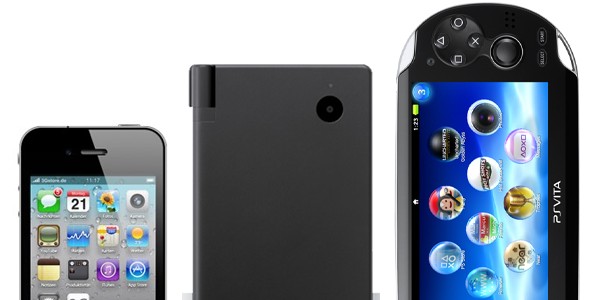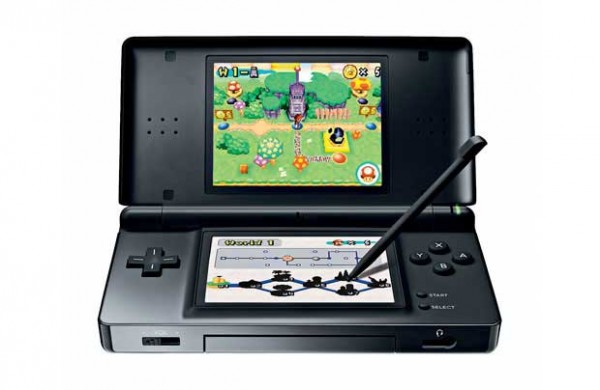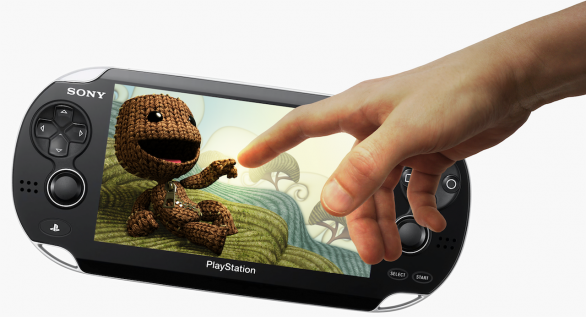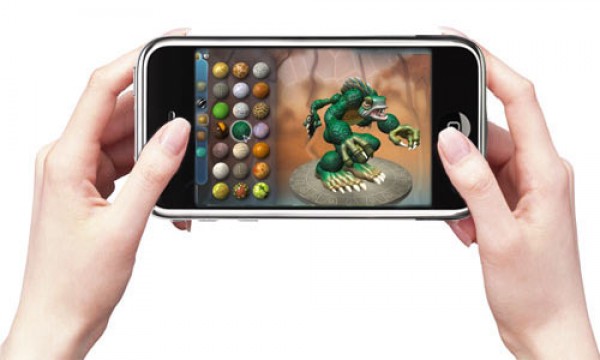Every day on my way to work, I see a fellow commuter on their smartphone. They are checking their email, updating their Facebook or tweeting; more often they are gaming. The gaming community has grown because of this brand new breed of gamer, playing games like Bejeweled or Angry Birds. Even with this growing audience of gamers on the go, I rarely see a dedicated handheld. No PlayStation Portables, Vitas, Nintendo 3DSs or DSs. Just a couple years ago, the only way to game while traveling was to use one of the aforementioned handhelds. Does this shift in the gaming paradigm mean the dedicated handheld is to go the way of the Dreamcast? Only if smartphones focus heavily on their gaming components, and thereby abandon their primary functionality, will they be able to replace the dedicated handheld.
In late 2004, the Nintendo DS launched in North America and Japan; it would be released in Europe, Australia and other territories in early 2005. After, an average launch, it would have been hard to fathom that the pint-sized successor to the Game Boy Advance would change the gaming world profoundly.
The DS stands for two things: dual screen and developers system. The latter though is illustrative of the expansive and creative spirit of the system. Nintendo created the system with the hope that game developers, from first-party to third-party, would utilize the experimental touch screen to fashion experiences unique to a handheld gaming device. Their hope became the basis for the unrivaled success of the handheld titan.
As of 2011, the DS is the second best-selling system of all-time, three million units behind the PlayStation 2 and four years younger. The impact of the console to the modern mobile gaming market cannot be simply expressed in sales figures, as impressive as they maybe. For the first time, a gaming console was able to fully break into the casual market. Titles like Brain Age and Nintendogs, simple in premise, allowed a larger audience to engage and be captivated. More importantly, these portable experiences did not require classic game controls like buttons. Players utilized the touch screen to carry out most commands which further eased the barriers of play that prohibited entry into the gaming sphere. The touch controls were not restricted to casual games; Nintendo and several third-party developers used these capabilities to test new ideas.
A house of invention, the DS served as the destination for risky bit-sized ideas. Compared to the production cost of a home console, it was much cheaper to create a game on the DS and the install base was of relative size. Smaller developers flocked to the bite-sized powerhouse for those exact reasons. Some of the great third-party games include Elite Beat Agents, Professor Layton and the Diabolical Box, Picross DS and Scribblenauts. Each of these games utilizes a unique function of the DS, ranging from the touch screen to the sound recognition.
The DS, however, was not without its flaws. Unlike its competitor, the PSP, its graphical capability fell severely short of the established standard of the period and it could really only play video games… well. Later iterations of the DS, the DSi and DS XL, had the ability to surf the internet and stream videos, but those features were uncomfortably adapted to the system.
These inadequacies of the DS left a window for touch screen smartphones, especially the iPhone, to operate and dominate. The iPhone was a revelation, boasting the first completely touch-based phone. It was received well, critically and commercially, with the crown jewel of the App Store. The third-party software available is not only cheap but has set standard of quality unlike its Android counterpart.
The overwhelmingly positive market reaction towards the iPhone is in part due to the colossal success of Nintendo’s handheld. Casual audiences (non-gaming) had already been introduced to touchscreen gaming, albeit limited in application. Nonetheless, the ability to draw on a familiar, well-selling product was a boost. The smartphone’s technological capabilities and install base made it an obvious destination for games. The App Store’s development kit ranged from $100 – $300. An absolute steal compared to consoles and with the ability to self-publish, the dawn of mobile gaming was upon us.
Mobile gaming was by no means console gaming, but it didn’t have to be. The crux of mobile gaming was simplification, enthralling gameplay and one-touch controls. There was no longer a need to memorize what each button did or wait to find a save spot or run into a checkpoint. When you wanted to play all you had to do was touch the app, play for 10 minutes then close out of it. The public embraced it and developers loved it. Furthermore, players could now be developers.
The low price of the Dev Kits meant that anyone could develop a game as long as it met Apple’s standards. So boutique development firms sprung up overnight to try their hand at this new platform. The accessibility of the App Store meant that they had a large captive audience and the relatively cheap price of games, free to $10, meant people would purchase their product. There was also a system in place for feedback so smaller developers could tweak problems or enact suggestions from their fan base efficiently.
Having the ability to a comprehensively game on a device that already has a primary function is incredible. The iPhone is a navigation system, a gaming platform, a web browser and, of course, a phone. This meant that the term “gamer” was no longer synonymous with “nerds”, “geeks” or “any ostracized member of society”. The previous negative stigma of gamers was largely dissipated. If anything, the rise of mobile gaming has introduced previous non-gamers to console gaming.
With all these achievements, it would be easy to say that dedicated handhelds are on their last legs, but that would be presumptuous. The iPhone and its smartphone counterparts are jacks of all trades but masters of none. There has been no evidence that smartphones have replaced some of the stand-alone devices they mimic, so why would handhelds go the way of the dinosaurs? By that same token, the 3DS or PS Vita could never replace a smartphone because their distinct purpose is to bring a unique gaming experience to a travel-sized device.
Smartphones games are limited in their ability to function as distinct gaming platforms. Mobile games are best done when they successfully establish a singular game mechanic and/or theme. Games like Plants vs. Zombies or Jetpack are able to do this effortlessly. The limitation of the smartphone game is the inability to expand beyond one aspect of core gaming whether that is in gameplay, presentation, story or sound. Mobile games are built to be light and quickly accessible modes of fun. They are not twenty hour narratives. Even a game like Infinity Blade that has tremendous presentation and solid gameplay is not built as a console game. It has distinct characteristics that are the staple of mobile game and that is fine.
Mobile games do not have to mimic handhelds and can flourish as distinctly different experiences. Smartphones that have tried to incorporate buttons and become that bridge between the two worlds— like the Sony Xperia Play—failed because of an identity crisis. The Xperia Play had buttons but did not have the quality of games that properly utilized that button support; conversely, it did not excel at its multimedia components, which hampered its ability to be a productive smartphone. In the same light, dedicated handhelds should primarily focus on games rather than adapting to smartphone.
The Vita has the capabilities of a modern multimedia device and a gaming console. The impressive rear and front touch screens in addition to the technical capabilities of the system are quite impressive. The sales numbers are not. However, it’s too early to dismiss the Vita; Sony can still learn from the mistakes of the PSP and insure that the handheld creates unique and diversified experiences in order to engage and retain its install base. If not, the Vita will be nothing more than a PSP 2.0: a great machine with an identity crisis.
I love my iPhone and my 3DS equally and for different reasons. The iPhone games are quick, fun and addictive while the 3DS titles amaze me with their unique approach to gaming on a smaller screen. Both mediums have a bright future and are in no way diminishing to each other. Rather, I would argue that the competition has created a better environment for consumers. There will always be crossover and each side will borrow and learn from the other and as long as high quality games keep coming from high-quality developers.





















